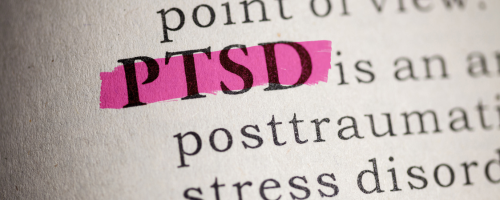Post-Traumatic Stress Disorder (PTSD) and the Potential Role of Medical Cannabis
Post-Traumatic Stress Disorder (PTSD) is an anxiety disorder that can develop after exposure to a traumatic event or a distressing period in a person’s life. While commonly associated with war veterans, PTSD can affect anyone who has experienced stressful, frightening, or life-threatening events. Talking therapies and medications are typically the first-line treatments, but medical cannabis may be considered for managing PTSD symptoms if further support is needed.
What is PTSD?
PTSD, or post-traumatic stress disorder, was first officially recognised in the late 1970s, though its roots can be traced back further. The condition was previously known as “shell shock,” affecting soldiers after combat, but it is a misconception that PTSD only affects those in the military. In fact, PTSD is prevalent in the general population as well.
PTSD often manifests as flashbacks and nightmares of the traumatic event, and individuals may experience feelings of guilt, irritability, isolation, and insomnia, making it difficult to function in daily life.
What Causes PTSD?
There is no single cause for PTSD, but it is typically linked to experiencing traumatic events that fall outside the range of normal human experience. However, not everyone exposed to trauma will develop PTSD.
Common causes of PTSD include:
-
Involvement in a car accident
-
Experiencing violence, such as military combat, terrorism, domestic abuse, or physical assault
-
Sexual assault or rape
-
Abuse, including bullying, racism, or identity-based harassment
-
The sudden death of a loved one
-
Witnessing traumatic events
-
Work-based trauma, especially for those in the military or emergency services
-
Being diagnosed with a life-threatening condition
Individuals with other mental health issues or limited social support may be at higher risk of developing PTSD.
Symptoms of PTSD
The hallmark symptom of PTSD is re-living the traumatic event through flashbacks or nightmares. Other symptoms include:
-
Repeated intrusive thoughts or sensations, sometimes accompanied by physical reactions like pain, sweating, or nausea
-
Night terrors and difficulty sleeping
-
Avoidance of places, people, or situations that may trigger memories of the event
-
Constantly feeling anxious or “on edge” (hyperarousal), leading to irritability, anger, and poor concentration
Complex PTSD
Complex PTSD includes additional symptoms, such as:
-
Difficulty regulating emotions
-
Persistent feelings of emptiness or hopelessness
-
A sense of being disconnected from oneself or the world (dissociative symptoms)
-
Physical symptoms like headaches, chest pains, or stomach aches
-
Feelings of being damaged or worthless
Diagnosing PTSD
After a traumatic event, it’s normal to feel upset or confused, but if symptoms last for more than four weeks, it may indicate PTSD. Diagnosis typically involves an assessment by a GP or mental health specialist. While GPs may make the initial diagnosis, referrals to community mental health teams or specialists are common for further evaluation and treatment.
How is PTSD Treated?
PTSD can be treated even years after the trauma—it is never too late to seek help. The primary treatments for PTSD include:
-
Talking therapy: Trauma-focused cognitive behavioural therapy (CBT) and eye movement desensitisation and reprocessing (EMDR) are common therapies.
-
Medication: Antidepressants, such as venlafaxine or selective serotonin reuptake inhibitors (SSRIs), are often prescribed.
-
Active monitoring: If symptoms haven’t persisted for more than four weeks, monitoring the progression may be recommended before starting treatment.

